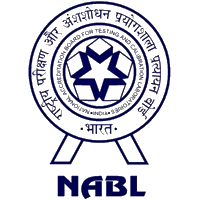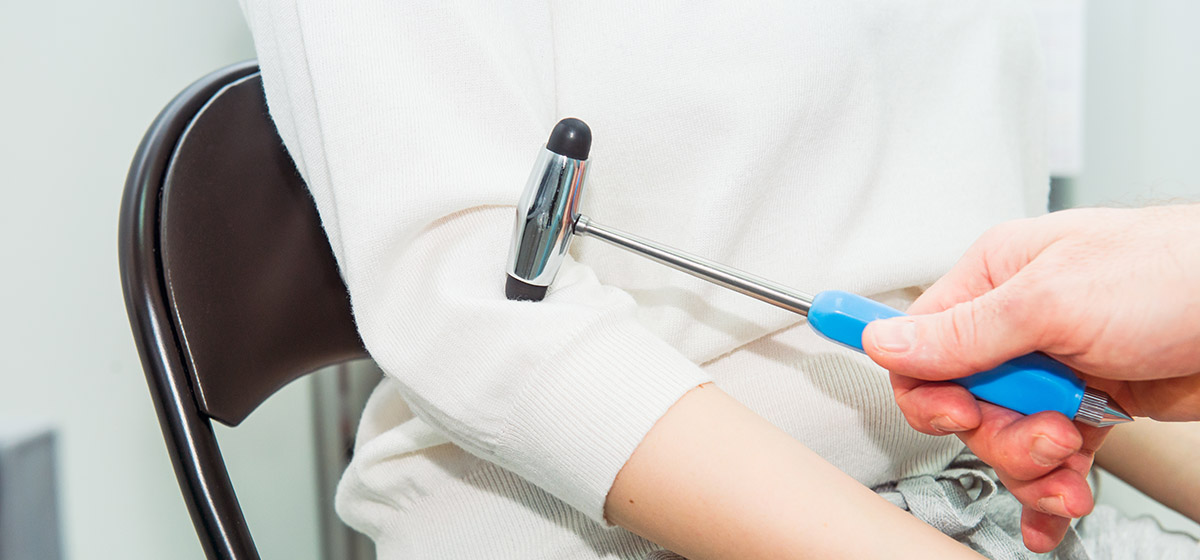Neurology
Doctor List
Dr. P. Chakraborty , MD, DM (Neuro) FAAN (USA) ERCP (Glasgow)
Dr. Prosenjit Sengupta , MD, DM (Neuro)
Dr. Joydeep Biswas, MBBS, DNB (Gen Med), DNB (Neuro)
Dr. Amlan Kusum Datta, MBBS, MD (Gen Med), DM (Neurology), DNB (Neurology)
Neurology is the branch of medicine concerned with the study and treatment of disorders of the nervous system, which include the brain, blood vessels, muscles and nerves. Neurology deals with the diagnosis and treatment of all categories of conditions and disease involving the central and peripheral nervous systems (and their subdivisions, the autonomic and somatic nervous systems), including their coverings, blood vessels, and all effector tissue, such as muscle. The nervous system is a complex, sophisticated system that regulates and coordinates body activities. It has two major divisions:
Central nervous system: the brain and spinal cord
Peripheral nervous system: all other neural elements, such as eyes, ears, skin, and other "sensory receptors"
A neurologist is a physician specializing in neurology and trained to investigate, or diagnose and treat neurological disorders. The nervous system is made of two parts: the central and peripheral nervous system. It includes the brain and spinal cord. Neurologists may also be involved in clinical research, clinical trials, and basic or translational research. They also specialize in nonsurgical management of disorders of the nervous system.
Symptoms that commonly require a neurologist include the following:
Coordination problems
Muscle weakness
A change in sensation
Confusion
Dizziness
The neurologist also treats disorders that affect the brain, spinal cord, and nerves, such as:
Seizure disorders, such as epilepsy
Cerebrovascular disease, such as stroke
Demyelinating diseases of the central nervous system, such as multiple sclerosis
Neuromuscular disorders, such as myasthenia gravis
Infections of the nervous system, including encephalitis, meningitis, or brain abscesses
Neurodegenerative disorders, such as Parkinson's disease, Amyotrophic Lateral Sclerosis (Lou Gehrig's disease) and Alzheimer’s disease
Spinal cord disorders, including inflammatory and autoimmune disorders
Headaches, such as cluster headaches, and migraine
Speech and language disorders
Child Neurology
Treatment of adult spasticity
Neuro – Ophthalmology
Neurotology
The team of Neuro-physicians and surgeons at Ruby General Hospital is dedicated to providing exceptional, compassionate and easy-to-access care to patients with neurological diseases and disorders.We care and we help the family in caring for the patients. This we do by applying innovative and promising solutions, from surgery of the Brain and Spine wherever surgery is the solution. With our patients needing medical (non surgical and post-surgical) solutions for their neurological issues we have our coordinated approach with Neurologists, Counselors, Rehabilitant Specialists.
Neurology principle procedures :
Lumbar puncture - A lumbar puncture (also known as a spinal tap), is an invasive diagnostic test, using a needle which is carefully inserted to remove a sample of cerebrospinal fluid (CSF) from the space surrounding the brain and the spinal cord. Lumbar punctures are performed to find the cause of infections, inflammation, cancer or bleeding around the area surrounding the spinal cord or brain, identify some cases of multiple sclerosis and other neurological conditions, and measure intracranial pressure. It can also be used to diagnose certain diseases of the brain and spinal cord as well as deliver medications to the cerebrospinal fluid (CSF). Lumbar punctures are also used to deliver a dye to the cerebrospinal fluid (CSF) to make the spinal cord and cerebrospinal fluid (CSF) more visible on X-rays (myelogram). Neurologists can also use a lumbar puncture to treat conditions that affect the spinal cord. They can inject anesthetics, antibiotics, or cancer treatments using a lumbar puncture needle.
Neurologists may use this procedure to help diagnose the following conditions:
Meningitis
Encephalitis
Myelitis
Leukemia
Autoimmune diseases, such as Multiple Sclerosis (MS)
Dementia
Bleeding in the brain
Tensilon test - This procedure helps a neurologist diagnose myasthenia gravis which is a rare neuromuscular disease that weakens the muscles in the arms and legs. In this test, the doctor injects with a medicine called Tensilon. Then it is observed how the muscle movements are affected. Tensilon is the brand name of a drug called edrophonium chloride, which is given intravenously. The drug prevents the breakdown of acetylcholine, a neurotransmitter that stimulates muscle movement. Tensilon blocks the action of acetylcholinesterase, an important neurotransmitter and help prolongs muscle stimulation. A neurologist can also use a blood test called a Tensilon test to diagnose myasthenia gravis. Myasthenia gravis causes the immune system to attack acetylcholine receptors in the muscles, which causes muscle fatigue and decreased muscle movement.
During a Tensilon test, a neurologist will inject a small amount of Tensilon into the bloodstream. Then, the person will be asked to perform different movements, such as:
Standing up and sitting down
Holding their arms above their head
Crossing and uncrossing their legs
The neurologist will continue administering doses of Tensilon each time the person feels tired. If the person notices that their strength returns after each Tensilon injection, this indicates that they are likely to have myasthenia gravis.
Electromyography (EMG) - An Electromyography (EMG) is a technique designed to evaluate and record the electrical activity of muscles between the brain or spinal cord to a peripheral nerve. This nerve is found in the arms and legs, and is responsible for muscle control during times of movement and rest. The test measures how well and how fast nerves can send electrical signals. It is performed using an instrument called an electromyograph, which produces a record known as an electromyogram. Electromyography (EMG) can help the neurologist to assess how well a person’s muscles respond to electrical stimulation from motor neurons, which are specialized nerves that control muscle movement as well as diagnose neuromuscular diseases and diseases such as muscular dystrophy, myasthenia gravis and Amyotrophic Lateral Sclerosis (ALS), spinal cord disease and general muscle or nerve dysfunction.
During an EMG, a specially trained technician inserts small needles called electrodes into the muscles to help measure activity that occurs in muscle tissue during periods of movement and rest. Such activity is recorded by a machine attached to the electrodes with a series of wires. This test is used to determine more about the functioning of peripheral nerves in the arms and legs. It can show if a nerve is pinched and estimate the severity and location of the pinched nerve.
Often times, a neurologist may advice a nerve conduction velocity (NCV) study in conjunction with an Electromyography (EMG). While an Electromyography (EMG) measures muscle activity, a nerve conduction velocity (NCV) assesses the ability of the nerves to send the necessary signals that control these muscles. If a neurologist recommends both tests, it is likely to do the Electromyography (EMG) first.
During an NCV test, electrodes are taped over the same muscles that one had EMG electrodes in previously. Two sets of electrodes are used here — one sends small pulses in an effort to stimulate the nerves, while the other set measures the results.
Nerve Conduction Study - This is a sensitive test which stimulates specific nerves and records their ability to send the impulse to the muscles or up the sensory nerves at normal speeds and is usually done in conjunction with an EMG. This study can determine if there is a blockage of the nerve pathway and whether the nerve is functioning normally.
Nerve conduction studies are done for the following reasons:
To find and evaluate damage to all the nerves that lead away from the brain and spinal cord to the smaller nerves that branch out from them
To help diagnose nerve disorders, such as carpal tunnel syndrome or Guillain-Barré syndrome
To find the location of abnormal sensations, such as numbness, tingling or pain.
During this test, electrode patches are placed along the known course of the nerve. The nerve is then stimulated with a tiny electrical current at one point. The nerve transmits a signal along its course and an electrode is placed further down the arm or leg and can capture the signal as it passes. A normally functioning nerve will transmit the signal faster and stronger than a damaged nerve. This procedure is usually done before an EMG if both tests are being done.
Electroencephalogram (EEG) - An electroencephalogram (EEG) is a test that measures and records the electrical activity of the brain. Neurons in the brain communicate with other neurons through electrical impulses, which an EEG can pick up. It can also track brain wave patterns. During the test, electrical sensors are attached to the head of the patient and run by wires to a computer. As small charges in the brain are measured through the electrical sensors, the technician will create changes in the environment to measure brain signals, such as different lighting or noises. The computer then records the brain’s electrical activity which can be seen on screen or printed on paper. An electroencephalogram is used to help identify abnormal electrical activity in the brain and diagnose conditions of the brain, including inflammation, tumors, and injuries, as well as epilepsy, seizures, sleeping problems and psychiatric disorders. It is also used to confirm brain death in patients on life support.
Other diagnostic procedures include sleep studies and angiography. Angiography determines blockages in the blood vessels going to the brain.
Sleep Study (Polysomnogram) - Polysomnography, also called a sleep study, is a study or test done while one is fully asleep and is used to diagnose sleep disorders in patients who have chronic sleep problems. Polysomnography records the brain waves, skeletal muscle activity.
The alternative names for BAER test are Evoked auditory potentials, Brainstem Auditory Evoked Potentials (BAEP), Evoked response audiometry, Auditory brainstem response, ABR, BAEP.
In addition to helping diagnose sleep disorders, polysomnography may be used to help adjust the treatment plan if one has already been diagnosed with a sleep disorder.
The doctor may recommend polysomnography if the following are suspected:
Sleep apnea or another sleep-related breathing disorder - In this condition, the breathing repeatedly stops and starts during sleep.
Periodic limb movement disorder or restless leg syndrome – It involves uncontrolled flexing and extension of the legs while asleep. This condition is sometimes associated with restless legs syndrome.
Narcolepsy - One experiences overwhelming daytime drowsiness and sudden attacks of sleep in this condition.
REM sleep behavior disorder - This sleep disorder involves acting out dreams as during the sleep.
Unusual behaviors during sleep - The doctor may perform this test if one has unusual activities during sleep, such as walking, moving around a lot or rhythmic movements.
Sleep-related seizure disorders
Unexplained chronic insomnia - If one consistently has trouble falling asleep or staying asleep, the doctor may recommend polysomnography.
Brainstem Auditory Evoked Response (BAER) Test / or Brainstem Auditory Evoked Potential (BAEP) - This test is used to diagnose hearing ability and measure the brain wave activity that occurs in response to the sounds one hears. It may also indicate the presence of brainstem tumors and multiple sclerosis. The response is collected with a special computer through extremely small electrodes placed under the skin of the scalp: one in front of each ear, one at the top of the head, and one between the shoulders. The BAER test records the brainwaves in response to auditory stimuli, such as clicking noises and tones that are delivered to one or both ears through headphones. This test takes 30 to 45 minutes to complete. The test is also called a brainstem auditory evoked potentials (BAEP) or auditory brainstem response (ABR) test.
A BAER test can help to diagnose hearing loss and nervous system disorders, especially in newborns, young children, and others who may not be able to participate in a standard hearing test. Children aged 1one or older typically require a mild form of sedation prior to the test. All babies and young children must sleep throughout the test as any muscle movement may contaminate the test results.
The alternative names for BAER test are Evoked auditory potentials, Brainstem auditory evoked potentials, Evoked response audiometry, Auditory brainstem response, ABR, BAEP.
The test is performed for the following reasons :
Help diagnose nervous system problems and hearing loss (especially in newborns and children)
Determine how well the nervous system works
Determine hearing ability in people who cannot do other hearing tests.
This test may also be performed during surgery to decrease the risk of injury to the hearing nerve and brain.
Carotid Duplex (Carotid Ultrasound) - In this procedure, two types of ultrasound is combined to help detect plaque, blood clots or other problems with blood flow in the carotid arteries. A carotid duplex ultrasound is also performed to evaluate symptoms including dizziness, loss of memory, stroke, loss of muscle control and other symptoms that might result from narrowing or blockage of the vessels (carotid arteries) which are located along both sides of the neck.
Other names for a carotid duplex scan are:
Carotid artery duplex scan
Carotid ultrasound
Vascular ultrasound
Carotid artery Doppler sonography
Cerebral Angiography (also called Vertebral Angiogram or Carotid Angiogram) - An angiogram provides accurate information that cannot be obtained from other tests. It can help detect the degree of narrowing or obstruction of an artery or blood vessel in the brain, head or neck. It can also be used to detect the location and size of aneurysms and vascular malformations. Cerebral angiography is a diagnostic test that uses an X-ray. It produces a cerebral angiogram, or an image that can help the doctor to find blockages or other abnormalities in the blood vessels of the head and neck. Blockages or abnormalities can lead to a stroke or bleeding in the brain. Cerebral angiography is also known as intra-arterial digital subtraction angiography (IADSA).
Cerebral angiography can help diagnose:
Aneurysm
Arteriosclerosis
Arteriovenous malformation
Vasculitis, or inflammation of the blood vessels
Brain tumors
Blood clots
A tear in the wall of an artery, known as a vascular dissection
A stroke
Cerebral angiography may also be used to help diagnose the cause of symptoms, such as:
Stroke
Severe headaches
Loss of memory
Slurred speech
Dizziness
Blurred or double vision
Weakness or numbness
Loss of balance or coordination
Arteries are not normally seen in an X-ray, so contrast dye is utilized, X-ray images show blood vessel abnormalities in the brain. A local anesthetic is administered, an artery, usually in the arm or leg, is punctured and a needle is inserted into the artery. A catheter (a long, narrow, flexible tube) is inserted through the needle and into the artery. It is then threaded through the main vessels of the abdomen and chest until it is properly placed in the arteries of the neck. This procedure is monitored by a fluoroscope (a special X-ray that projects the images on a TV monitor). The contrast dye is then injected into the neck area through the catheter and X-ray pictures are taken.
Discography (also called discogram) - It is an interventional diagnostic imaging test that helps determine if intervertebral discs in the spinal column are a cause of back pain. It is also used to help guide the treatment of abnormal intervertebral discs. Intervertebral discs are sponge-like cushions between the vertebrae, or bones of the spine. Discs act as a sort of shock absorber for the spine and help provide flexibility. Each disc has a strong outer layer called an annulus and a center part, called a nucleus, made of a soft, rubber-like material. When discs bulge or rupture, they may press on the nerves of the spinal column and cause pain or weakness. A discogram is typically performed to help diagnose the cause of back pain and to guide the treatment of abnormal discs. The procedure may also be performed prior to surgery to help identify discs that need to be treated or removed.
In some cases, discs may appear abnormal on MRI or CT scans, but are not the source of pain. A discogram can help identify discs that cause pain and can be a helpful diagnostic tool in planning a course of treatment, including surgery. A negative discogram can help prevent unnecessary surgery that may not be beneficial. Because of the nature of this test, discography is usually done only if the pain is significant enough to consider surgery.
During this procedure, a contrast liquid is injected into the center of one or more spinal discs using x-ray guidance. This injection may temporarily reproduce the patient's back pain symptoms. The procedure may be performed at more than one disc level at the same time. As part of the procedure, an x-ray or CT scan also may be performed to obtain pictures of the injected disc.
Ice packs and over-the-counter and/or prescription pain medication can be used to help manage muscle soreness that may occur in the first few days after the procedure.
Oculoplethysmography (OPG) - This is a noninvasive test used to detect the presence of blockage in the carotid arteries. The test indirectly measures the blood flow in the ophthalmic artery, which branches off the carotid artery and supplies blood to the eye. Suction cups are placed on the eyes and sensors are placed on the earlobes to record pulses.
If the pulse arrives at the ophthalmic arteries and the earlobes at the same time, this usually means that the carotid arteries are free of blockage. In contrast, if the pulse arrives at the eyes and the earlobes at different times, this may indicate that blood flow in these arteries is restricted.
Selective Nerve Root Block - Nerve roots exit the spinal cord and form nerves that travel into the arms or legs. These nerves allow movement of the arms, chest wall and legs. These nerve roots may become inflamed and painful because of irritation from a bony spur or herniated disc in the spine. The block provides important information about which nerve is causing pain by temporarily numbing the specific nerve root.
The neurosurgeon, directs a very small needle, using X-ray guidance near the specific nerve being tested. A small amount of contrast dye is injected to insure proper needle position. This may increase the normal level of pain for about 30 minutes. If pain is reduced after the injection, that nerve is most likely causing the pain. If the pain level is unchanged, that nerve is most likely not causing the pain. By confirming or eliminating the exact source of pain, this test allows the neurosurgeon to develop appropriate treatment, which may include further nerve blocks and/or surgery.
Services Provided
Neurotology
Cerebrovascular diseases-Stroke
Child Neurology
Epilepsy
Headache
Movement Disorders/Parkinson's Disease
Treatment of adult spasticity
Multiple Sclerosis
Neuromuscular Diseases
Neuro-Ophthalmology
General Neurology
Our Rehabilitation Services include:
Speech Therapy
Physiotherapy
Balancing and posture training
COUNSELING and domicilary guidance
Diet help
Unique Cases
HEALTH IS JUST A HURDLE IN THE JOURNEY OF LOVE
Marriage occurs not only between two individuals but it deeply involves and bonds two families as well.... Read More
Quick links
- Emergency Services
- International Patient Services
- Corporate Tie-Up
- TPA & Cashless Facilities
- Find a Doctor




















